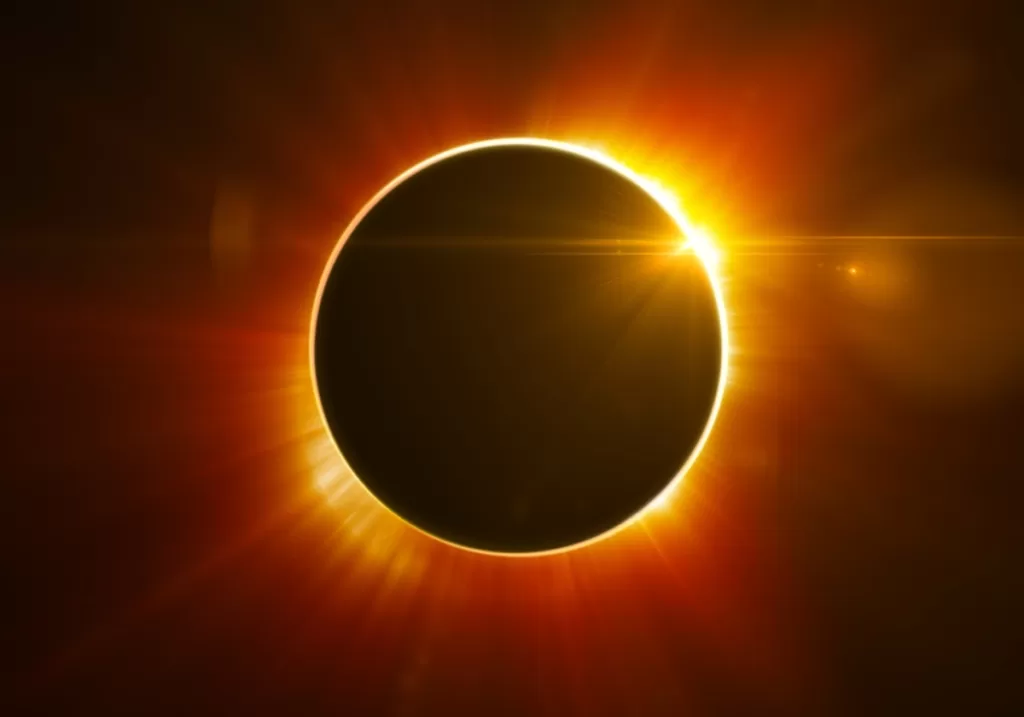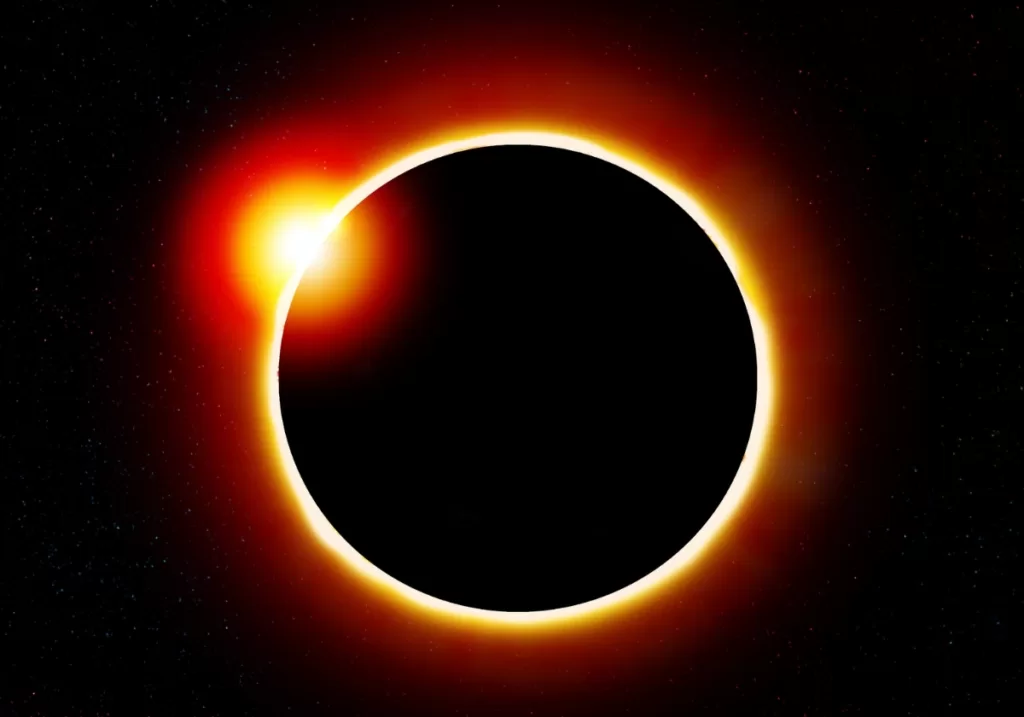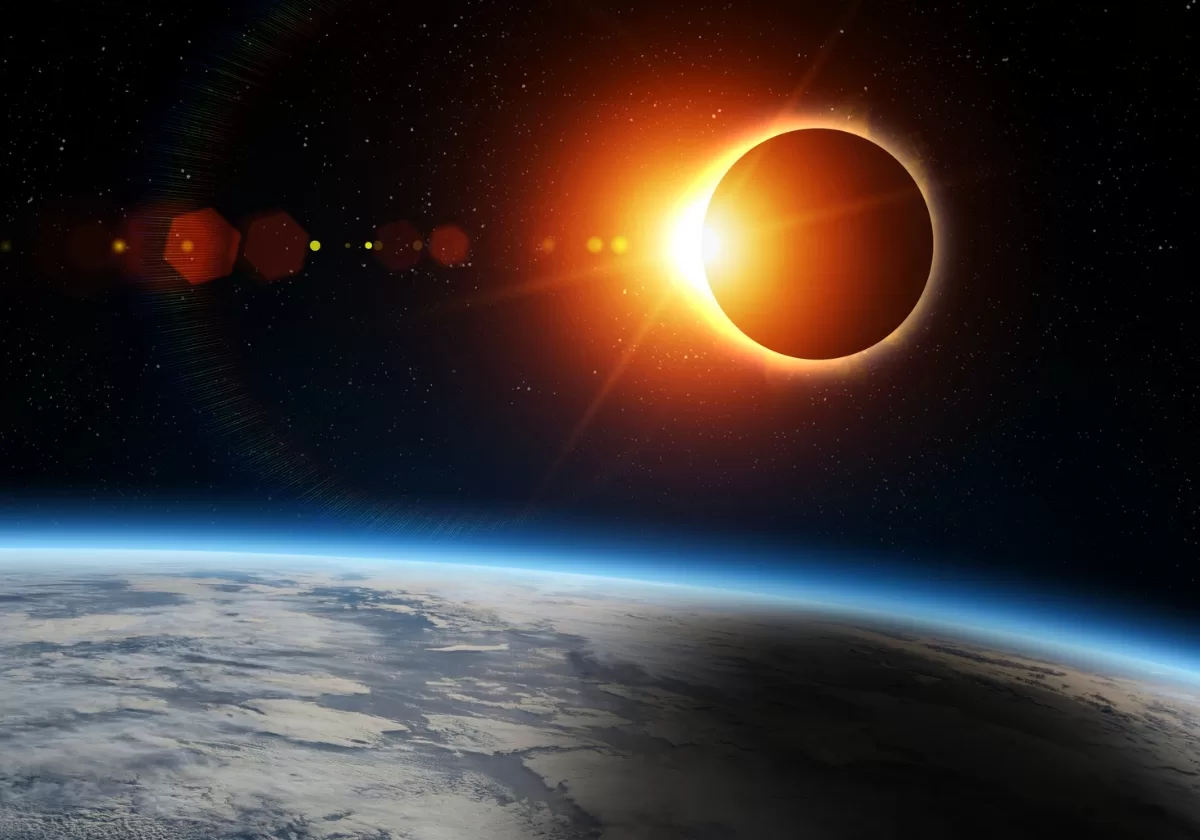In the realm of celestial occurrences, a rare celestial phenomenon is scheduled for Saturday, the 14th of October. On this day, the lunar body will elegantly position itself directly between Earth and the radiant sun, thus enveloping our planet in its shadow.
Individuals situated within the pathway of this cosmic spectacle, primarily those in the Western United States, Mexico, Central, and South America, will have the unique opportunity to gaze upwards and witness a truly extraordinary event: the annular “ring of fire” solar eclipse.

The trajectory of this weekend’s celestial journey holds a special significance as it passes through the Navajo Nation and the ancestral lands of several Indigenous communities in the Four Corners region. Here, such celestial phenomena bear profound cultural importance. Citizens of the Navajo Nation, known as the Diné people, traditionally refrain from venturing outdoors during the eclipse, abstaining from direct gaze upon it and avoiding the eclipse’s radiance. In observance of these cherished cultural traditions, some tribal lands, including all Navajo Tribal Parks and the iconic Monument Valley, will be closed to visitors on Saturday.
Unlike the more common total solar eclipse, where the moon entirely obscures the sun, the annular eclipse allows a slender crescent of sunlight to gracefully seep around the moon’s edges. This distinctive phenomenon arises due to the moon’s slightly greater distance from Earth in its orbital path, causing it to appear slightly smaller than the sun and thus resulting in a luminous halo encircling it. This distinctive feature is the origin of the “ring of fire” nomenclature, and indeed, it is a captivating sight. (Caution is paramount, though; never directly gaze at the sun, as discussed below.) Such eclipses are relatively rare, with just a dozen more anticipated throughout this decade, spanning various global locales.

In the United States, weather permitting, the eclipse will grace the skies above regions in Oregon, California, Idaho, Nevada, Utah, New Mexico, Texas, Colorado, and Arizona, as detailed by NASA. The eclipse’s commencement in Oregon is scheduled for 9:13 am Pacific Time, concluding in Texas at 12:03 pm Central Time, before continuing its journey over Mexico, Belize, Honduras, Nicaragua, and ultimately extending into Brazil.
Those curious about when the eclipse will pass over their specific locale in the United States can consult the map provided below. Only those positioned within the shaded zone will be fortunate enough to observe the complete “ring of fire.” Alternatively, visit NASA’s eclipse website, which offers a user-friendly interactive tool, allowing users to pinpoint their exact location and receive precise information regarding the eclipse’s commencement and conclusion.
For those who cannot venture to the eclipse’s pathway, NASA offers a live broadcast for remote viewing, ensuring everyone has a chance to partake in this astronomical spectacle. If you have persevered through this extensive article and still harbor inquiries about solar eclipses, their origins, or future occurrences, fret not, for we shall elucidate:
Why do solar eclipses transpire?

The answer is multifaceted, involving a serendipitous alignment of cosmic conditions.
1) The moon must be in its “new moon” phase, with its dark side directly facing Earth.
2) The moon must intersect the plane of Earth’s orbital path, a rarity due to the moon’s five-degree axial tilt.
3) The moon must be situated near its closest point to Earth during its elliptical orbit to induce a total eclipse. Otherwise, an annular eclipse will ensue, producing the celebrated “ring of fire” effect.
A note of caution: Gazing directly at the sun can be detrimental to the eyes under normal circumstances, and the same holds true during an eclipse. NASA emphatically advises against staring at the sun’s rays, as this may lead to retinal damage, causing a permanent scotoma or ‘blind spot’ in one’s central vision. Even during a partial or annular eclipse, the remaining crescent of the sun emits intense light that can still result in retinal burns, despite illumination levels akin to twilight. For safe eclipse observation, it is recommended to employ indirect methods, such as projecting the eclipse onto a screen via a pinhole or using specialized filters.
If, perchance, you miss this forthcoming eclipse, rest assured, for another such event is slated for 2024, promising an awe-inspiring spectacle. This time, a total eclipse shall transpire, completely obscuring the sun and offering a breathtaking view of the sun’s ethereal corona—its luminous atmosphere, visible to the naked eye during this exceptional celestial event.
Solar Eclipse FAQ
Where will solar eclipse be visible 2023?
The timing of the October 14, 2023, eclipse varies by location. In the United States, it starts at 9:13 am Pacific Time and ends at 12:03 pm Central Time. Check local sources for precise times
Can I look at a solar eclipse?
Looking at a solar eclipse directly can harm your eyes. Always use proper eye protection, like eclipse glasses or indirect viewing methods.
Can we sleep during solar eclipse?
You can sleep during a solar eclipse as it’s safe. However, if you wish to observe the eclipse, follow safety guidelines.
How long does a solar eclipse last?
The duration of a solar eclipse varies. A total eclipse can last a few minutes, while a partial or annular eclipse may endure for a few hours. The length depends on the eclipse type and your location.
.
